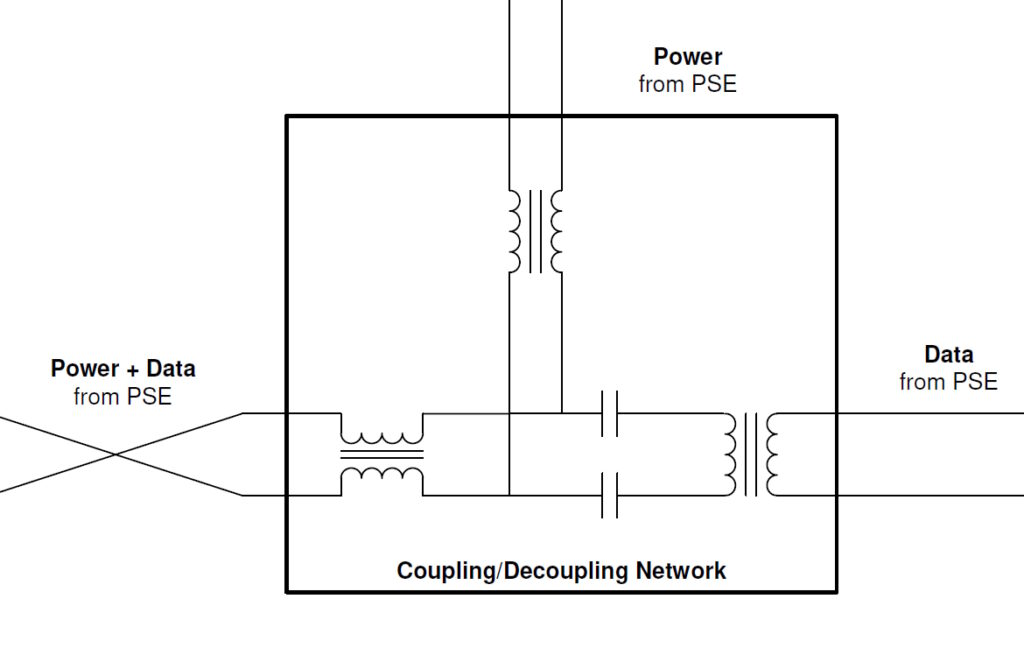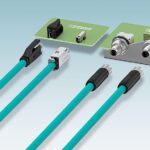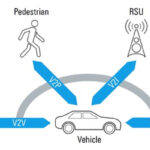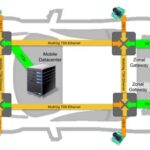Differential mode inductors (DMIs) are important components for the Power over Data Line (PoDL) and the related Single-Pair Power over Ethernet (SPoE) standards.
This article begins by reviewing where DMIs fit into Single-Pair Ethernet (SPE) and then compares PoDL and SPoE implementations and application targets.
Coupling and decoupling
DMIs play an important role in SPE coupling and decoupling networks (CDNs). The CDN has three magnetic components: a common mode inductor (CMI), an isolation transformer, and the DMI. The isolation transformer is an optional component used in safety-critical, PoDL, and SPoE designs, while the CMI is included in all SPE designs (Figure 1).

In a simple design, the SPE cable brings data into the device. In PoDL and SPoE designs, the cable carries both power and data. In both cases, the CMI, together with a couple of capacitors, suppresses common-mode noise. The common mode noise must be filtered while maintaining the integrity of the differential signal.
The transformer inductance and DMI inductance interact, as shown in the example in the next section on PoDL vs SPoE. The DMI requires a low direct current resistance (DCR) for efficient operation. Typical DCR values range from 360 mA to 2100 mA, depending on the powered device (PD) class of the design. In addition, the DMI’s inductance should be high enough to prevent excessive damping of the data.
PoDL vs SPoE
SPoE is like PoDL but targets different use cases. In both standards, power and data are separated via inductive (DC) coupling and transformer (AC) coupling, respectively. In both standards, power is extracted by the DMI. Like the CMI, it must have a maximum current rating appropriate for the PD class in use and low DC resistance to minimize power loss.
SPoE is an extension of the original PoDL standard. PoDL was specifically designed for use in automotive networks and other embedded systems. SPoE adds power classes 10 to 15 designed for use in industrial networks and building automation systems operating on either 24 Vdc or 55 Vdc power (Table 1).

In PoDL and SPoE, the inductance of the isolation transformer is parallel to the inductance of the DMI. The standard requires that the total inductance must be high enough to minimize loading at frequencies of 7.5 MHz or higher. IEEE 802.3dd-2022 specifies a maximum signal drop of 25%. For example, in one design a DMI with an inductance of 220 µH is used with a transformer that has an inductance of 2200 µH resulting in a total inductance of 200 µH and a maximum signal drop of 10%, more than adequate to meet the 25% requirement.
Summary
DMIs are important elements in the CDLs of PoDL and SPoE designs. The DMI needs a low DCR to enable efficient operation and a high enough inductance to prevent data damping. In addition, the DMI’s inductance is in parallel with the isolation transformer’s inductance, and the combined inductance must be high enough to limit signal droop to 25% or less for signals of 7.5 MHz and higher.
References
10BASE-T1L Field Device Development Platform with Class 12 and 13 SPoE, Analog Devices
IEEE 802.3cg 10BASE-T1L Power over Data Lines Powered Device Design, Texas Instruments
Single-pair power over Ethernet, Ethernet Alliance





Leave a Reply